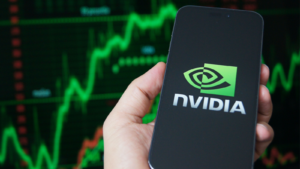In industry developments, nanomaterials are fast being embraced by the aerospace industry to produce smaller, more fuel-efficient aircraft components. The need for lightweight, high-strength materials that increase safety and performance while lowering cost drives this development.
North America accounts for the highest proportion of the nanotechnology market worldwide, due to the presence of big research facilities in the region and positive regulatory moves, such as the 21st Century Nanotechnology Research and Development Act.
Through the National Nanotechnology Initiative, the U.S. government has been giving nanotechnology top importance. With an all-time high of $2.16 billion for the NNI, which supports nanotechnology research across eleven federal agencies, the President’s 2024 budget proposal marks a high point.
Amid these developments, we’ll look at three strong buy nanotech stocks, trading at a discount, that come with double-digit upsides, aggressively taking up new nanotech initiatives.
Thermo Fisher (TMO)

Thermo Fisher Scientific (NYSE:TMO) actively participates in nanotechnology, but as biotech companies decrease product spending, the markets are penalizing the medical device company with a negative year-to-date outlook on its lower-than-expected 2024 outlook, opening up an attractive opportunity among nanotech stocks; upside is 18%.
TMO uses sophisticated transmission electron microscopy devices, like the Talos TEM, which can automatically generate and examine vast-area TEM data. By precisely characterizing and measuring nanoparticles, this approach enables several research and commercial applications.
AI and the Internet of Things are also linked to Thermo Fisher’s nanotechnology research. This connection boosts productivity, reduces AI systems, and influences nanotechnology.
The Helios 5 Hydra DualBeam PFIB-SEM and Glacios 2 Cryo-Tems were among TMO’s cutting-edge instruments at Microscopy and Microanalysis 2024. High-resolution imaging and nanoscale analysis allow scientists to manipulate materials at unprecedented levels.
In addition, Thermo Fisher launched an Innovation Lab in Pennsylvania and increased its biologics manufacturing in St. Louis. A new San Francisco cell therapy manufacturing factory is also expanding its biotechnology capability.
Furthermore, TMO is opening a new NanoPort plant in Taiwan to improve joint study and speed up progress in nanotechnology. Customers will be able to use the center’s electron microscope experts and the latest tools for materials science studies.
Nvidia (NVDA)

Nvidia (NASDAQ:NVDA), thanks to its strong position in the AI market, will continue to dominate the high-performance computing market, Bank of America (NYSE:BAC) believes, and it’s hard to argue with the investment giant, which also set a price target of $1,500 per share.
NVDA is the best-performing stock this year by a mile, but with a consensus price target of $140.70, it has a potential upside of 19%, cementing its place among quality undervalued nanotech stocks.
With the release of the GeForce RTX 40 SUPER Series GPUs, which enable the newest Nvidia RTX technologies like DLSS 3.5 and NVIDIA Reflex, Nvidia keeps innovating. For its RTX AI PCs, Nvidia has also included generative AI capabilities, hence expanding AI-powered features throughout its product line.
At SIGGRAPH 2024, Nvidia will demonstrate generative AI, simulation, and rendering, including almost twenty technical articles detailing their latest breakthroughs to inspire AI and graphics technology. These developments increase nanoscale simulations and representations, which are relevant to nanotechnology.
For Japan’s National Institute of Advanced Industrial Science and Technology, Nvidia is driving a new artificial intelligence supercomputer called ABCI 3.0. Built by Hewlett-Packard Enterprise and with thousands of Nvidia H200 GPUs and Nvidia Quantum-2 InfiniBand, this supercomputer will help Japan’s AI research capacity, thereby potentially boosting nanotech applications in artificial intelligence-driven material science and healthcare.
Analog Devices (ADI)

Analog Devices (NASDAQ:ADI) spent more than $1 billion expanding its Beaverton semiconductor wafer facility, where nanoscale products are produced. The expansion triples internal manufacture using state-of-the-art fab technology for 180-nanometer and higher.
Funded in part by ADI, MIT.nano, the top research center in nanoscience and nanotechnology, is dedicated to being at the forefront of nanotechnology research and development. The partnership supports nanoDAC Digital-to-Analog Converters, amplifiers, and data converters.
Focused on battery management technologies, ADI has established a significant strategic collaboration with LG Energy Solution. This combined effort aims to increase ADI’s capabilities in the rapidly growing electric car sector, therefore solidifying its leadership in innovative semiconductor solutions.
ADI is also extending collaboration with TSMC (NYSE:TSM) to ensure long-term wafer capacity supply, strengthen supply chain resilience, and boost manufacturing capacity.
With sales of $2.16 billion over the middle of their estimate, Analog Devices posted robust financial performance for the second quarter of fiscal 2024. Over the past twelve months, the corporation also accomplished a free cash flow of $3.1 billion and an operational cash flow of $4.3 billion. The robust numbers further boost the appeal of ADI among nanotech stocks and complement its potential 10% upside.
On the date of publication, Faizan Farooque did not have (either directly or indirectly) any positions in the securities mentioned in this article. The opinions expressed in this article are those of the writer, subject to the InvestorPlace.com Publishing Guidelines.
On the date of publication, the responsible editor did not have (either directly or
indirectly) any positions in the securities mentioned in this article.
Faizan Farooque is a contributing author for InvestorPlace.com and numerous other financial sites. Faizan has several years of experience in analyzing the stock market and was a former data journalist at S&P Global Market Intelligence. His passion is to help the average investor make more informed decisions regarding their portfolio.
